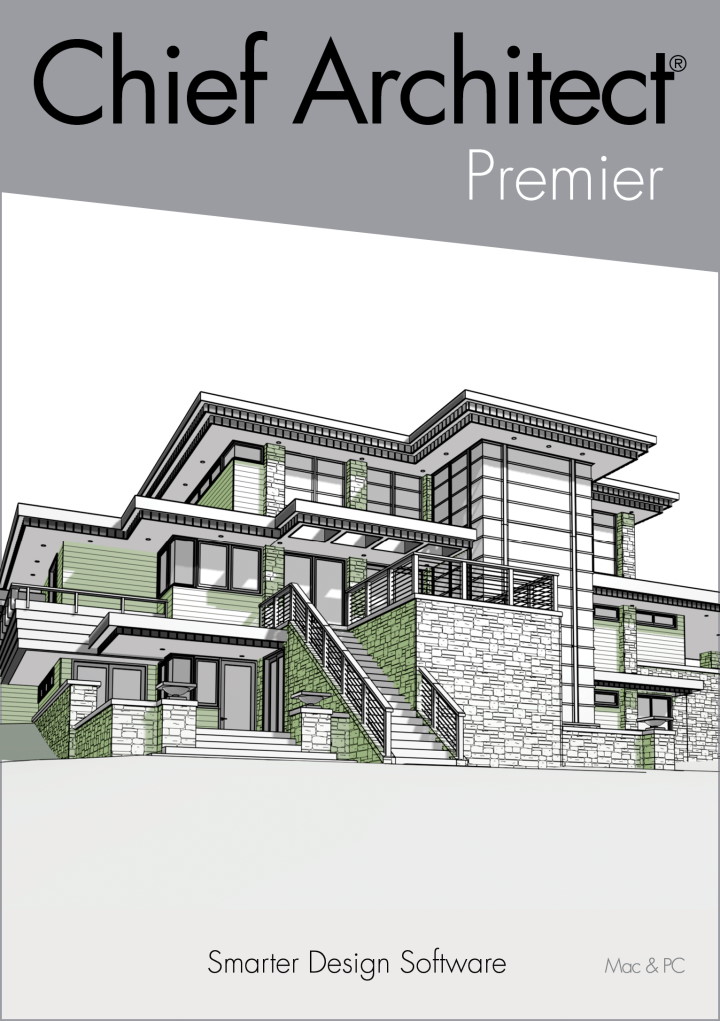Architect Advice on Maximizing Small Urban Spaces
Wiki Article
Understanding the Diverse Job Paths Available for Aspiring Architect
As a hopeful Architect, you have a world of career courses waiting on you. Each path offers special challenges and possibilities to use your imagination and technological knowledge. Whether you're attracted to conventional architecture or the subtleties of sustainable layout, there's a specific niche that aligns with your rate of interests. Understanding these varied options can form your professional journey, however which direction will you select to discover first?Traditional Design: Creating Buildings and Frameworks
Typical architecture focuses on designing buildings and structures that blend functionality with aesthetic appeal. Your designs can mirror social heritage, showcasing neighborhood practices while fulfilling modern-day needs.You'll create abilities in composing, model-making, and website analysis, enabling you to imagine and interact your ideas successfully. Involving with clients, you'll require to understand their vision and convert it right into practical styles.
Furthermore, building codes and sustainability practices are vital in your work, ensuring your frameworks are environmentally pleasant and risk-free. As you expand in your career, you'll discover possibilities in residential, industrial, and even reconstruction jobs, each offering special challenges. Embracing traditional style leads the way for a fulfilling career that admires the past while shaping the future.
Urban Planning: Shaping Communities and Public Spaces
As an ambitious Architect, you can play a vital duty as an urban planner, transforming just how communities operate and communicate. By employing neighborhood engagement approaches, you'll ensure that residents have a voice in forming their environment. And also, integrating lasting design concepts will aid create rooms that not only fulfill today's needs yet likewise protect the future.Function of Urban Planners
While many may consider engineers as the sole dreamers behind buildings, metropolitan organizers play an essential duty in shaping the wider landscape of areas and public spaces. They assess land use, zoning laws, and community needs to produce sustainable settings that enhance high quality of life. By teaming up with various stakeholders, you'll help design parks, transportation systems, and houses that advertise social communication and ease of access. Urban planners also concentrate on environmental factors to consider, making sure that growths incorporate green areas and assistance biodiversity. Your knowledge in spatial style and neighborhood characteristics allows you to visualize future growth while protecting social heritage. In this crucial role, you'll straight affect exactly how individuals experience their environments, making every job a possibility for favorable change.Neighborhood Interaction Techniques
Effective area interaction approaches are vital for metropolitan coordinators to guarantee that the voices of locals are listened to and valued in the preparation procedure. To cultivate purposeful discussion, you should focus on open discussion forums and workshops where community participants can reveal their concepts and worries. By actively including and paying attention comments, you'll develop spaces that show the neighborhood's requirements, inevitably leading to even more sustainable and successful metropolitan atmospheres.Lasting Layout Principles
When making urban rooms, integrating sustainable design concepts is critical for developing settings that prosper both ecologically and socially. Consider integrating eco-friendly spaces, like yards and parks, to improve biodiversity and improve air high quality.Designing with water preservation in mind is likewise essential-- consider rainfall gardens and absorptive surface areas to manage stormwater. Entailing neighborhood members during the preparation process warranties that the areas you develop satisfy their needs and encourage social interaction. By welcoming these principles, you'll add to lively, lasting metropolitan landscapes that benefit everyone.

Landscape Design: Creating Sustainable Exterior Settings
As you explore landscape architecture, you'll discover essential layout concepts that produce attractive and useful exterior areas. Lasting techniques play a vital function in guaranteeing these environments grow while decreasing environmental impact. And also, you'll find a selection of occupation opportunities that enable you to make a real distinction in how individuals communicate with nature.Layout Concepts in Landscape
Recognizing layout concepts in landscape style is essential for developing lasting exterior atmospheres that harmonize with nature. You'll need to consider components like percentage, range, and equilibrium to guarantee your styles feel cohesive and inviting. Furthermore, pay focus to seasonal adjustments, making with products that enhance the environments year-round.Sustainable Practices Overview
Sustainable practices in landscape architecture not just concentrate on aesthetic appeals however additionally focus on environmental health and resource preservation. By incorporating indigenous plants, you improve biodiversity and decrease the need for chemical plant foods and chemicals. Executing efficient watering systems aids conserve water and lessens runoff, protecting nearby ecosystems. You can design spaces that advertise soil health, such as practicing and utilizing natural products permaculture concepts. Additionally, integrating green infrastructure, like rain gardens and porous sidewalks, aids in stormwater administration and decreases city warm. You contribute to a much healthier world and give areas that foster neighborhood connection when you produce exterior atmospheres with sustainability in mind. Inevitably, these methods guarantee your styles profit both people and the atmosphere for many years to come.Profession Opportunities Expedition
With a solid foundation in sustainable methods, landscape design supplies a range of career paths that enable you to make a purposeful effect on the environment. You could work as a landscape designer, developing aesthetically pleasing and practical outside rooms, or concentrate on ecological remediation, assisting to restore broken ecological communities. Urban planners commonly team up with landscape engineers to develop environment-friendly rooms in urban settings, enhancing city livability. If you're passionate about education and learning, take into consideration becoming a landscape architecture educator, inspiring future generations. In addition, you could deal with nonprofits concentrated on ecological sustainability or participate in research study to introduce new practices. Each path not only shapes beautiful environments yet additionally promotes a healthier world for future generations.Lasting Design: Concentrating On Eco-Friendly Practices
As you discover your career in architecture, welcoming environment-friendly practices can set you apart in an affordable field. Sustainable style focuses on producing buildings that minimize ecological influence while boosting passenger health. By integrating renewable products, energy-efficient systems, and sustainable building methods, you'll add to a greener future.Start by getting knowledge of green accreditations like LEED or BREEAM, which can reinforce your qualifications. Consider just how natural light, air flow, and thermal performance can optimize style. Team up with designers and environmental specialists to introduce remedies that reduce waste and preserve resources.
Don't fail to remember the significance of neighborhood involvement-- interesting neighborhood stakeholders can motivate designs that integrate with the setting. As clients progressively focus on sustainability, your knowledge in environmentally friendly practices will not just bring in jobs but additionally meet your enthusiasm for accountable design. Accept this essential element of the career, and watch your job prosper.
Historic Preservation: Shielding and Restoring Cultural Heritage
While you begin on your building trip, consider the necessary duty of historic conservation in keeping our cultural heritage. This area concentrates on the security and reconstruction of significant buildings, websites, and frameworks that inform the stories of our past. By taking part in historic preservation, you'll help safeguard the architectural heritage that forms area identity.As a historic preservation Architect, you'll assess historic importance and evaluate the condition of structures. You'll function carefully with chroniclers and more info guardians to guarantee genuine remediation techniques are used. This profession course allows you to mix imagination with research, allowing you to design remedies that respect initial materials and workmanship.
Your work not just contributes to sustainability by recycling existing structures however also cultivates a sense of satisfaction within communities. Accepting this course will assist you become a guardian of background, maintaining the stories and aesthetics that enrich our lives.
Inside Style: Enhancing Indoor Spaces
Historical preservation and interior style both share a commitment to boosting the developed setting, but they concentrate on different aspects. While historic conservation stresses maintaining a structure's historical and social value, indoor architecture nos in on enhancing interior spaces for capability and appearances.As an aspiring Architect, you'll locate that interior design allows you to mix creative thinking with technical abilities. You'll develop spaces that not only look great however also advertise comfort and efficiency. This area entails recognizing exactly how light, shade, and materials interact within a room, affecting state of mind and use.
You'll deal with various tasks, read more from domestic homes to industrial offices, making certain that each atmosphere meets the demands of its owners. By focusing on customer experience, you can transform interiors right into inspiring and functional areas, making a considerable influence on how people connect with their surroundings. Accept the chance to enhance indoor settings and shape the way people work and live.
Industrial Design: Combining Functionality With Visual Appeals
Commercial layout plays a crucial duty in developing items that effortlessly blend aesthetic appeals with performance, guaranteeing that what you use daily is not just aesthetically enticing however also practical. As an ambitious Architect, you could immerse yourself in this area, focusing on making every little thing from furniture to customer electronic devices. Your work entails recognizing individual needs, products, and producing processes, permitting you to produce innovative remedies that improve everyday experiences.In industrial style, you'll frequently team up with makers, marketing experts, and engineers, ensuring that your styles are not just attractive yet additionally viable. This job course offers a vibrant setting where creative thinking fulfills functionality, making it a fulfilling choice for architects interested in forming the items of tomorrow.
Often Asked Concerns
What Educational Credentials Do I Need to Become an Architect?
To come to be a designer, you'll need a professional level in design, usually a Bachelor's or Master's. In addition, you'll need to complete a teaching fellowship and pass the Architect Registration Examination to exercise legally.Are There Qualification Demands for Different Building Profession Paths?
Yes, there're certification needs for different architectural courses. Architect. You'll need to pass tests, total internships, and occasionally go after specialized training, depending on your picked focus, like landscape style, metropolitan design, or historical preservationWhat Software Application Skills Are Crucial for Designers Today?

Exactly How Can I Gain Practical Experience While Studying Style?
You can get functional experience by interning at architectural companies, taking part in design competitors, volunteering for community tasks, or working together with classmates on real-world jobs. These chances enhance your abilities and build beneficial links in the market.What Job Opportunities Exist Outdoors Traditional Style Firms?
You can explore numerous task opportunities outside typical design firms, like city planning, interior decoration, landscape style, construction monitoring, property development, and even roles in sustainability consulting. Each offers unique obstacles and benefits.Whether you're attracted to conventional architecture or the subtleties of lasting style, there's a niche that lines up with your rate of interests.When creating metropolitan areas, incorporating sustainable style concepts more info is essential for developing environments that prosper both environmentally and socially.As you explore landscape design, you'll find essential design principles that develop gorgeous and practical outdoor areas.Recognizing layout concepts in landscape architecture is vital for developing lasting exterior settings that harmonize with nature.In industrial design, you'll commonly team up with marketers, manufacturers, and engineers, making sure that your layouts are not just attractive yet additionally feasible.
Report this wiki page